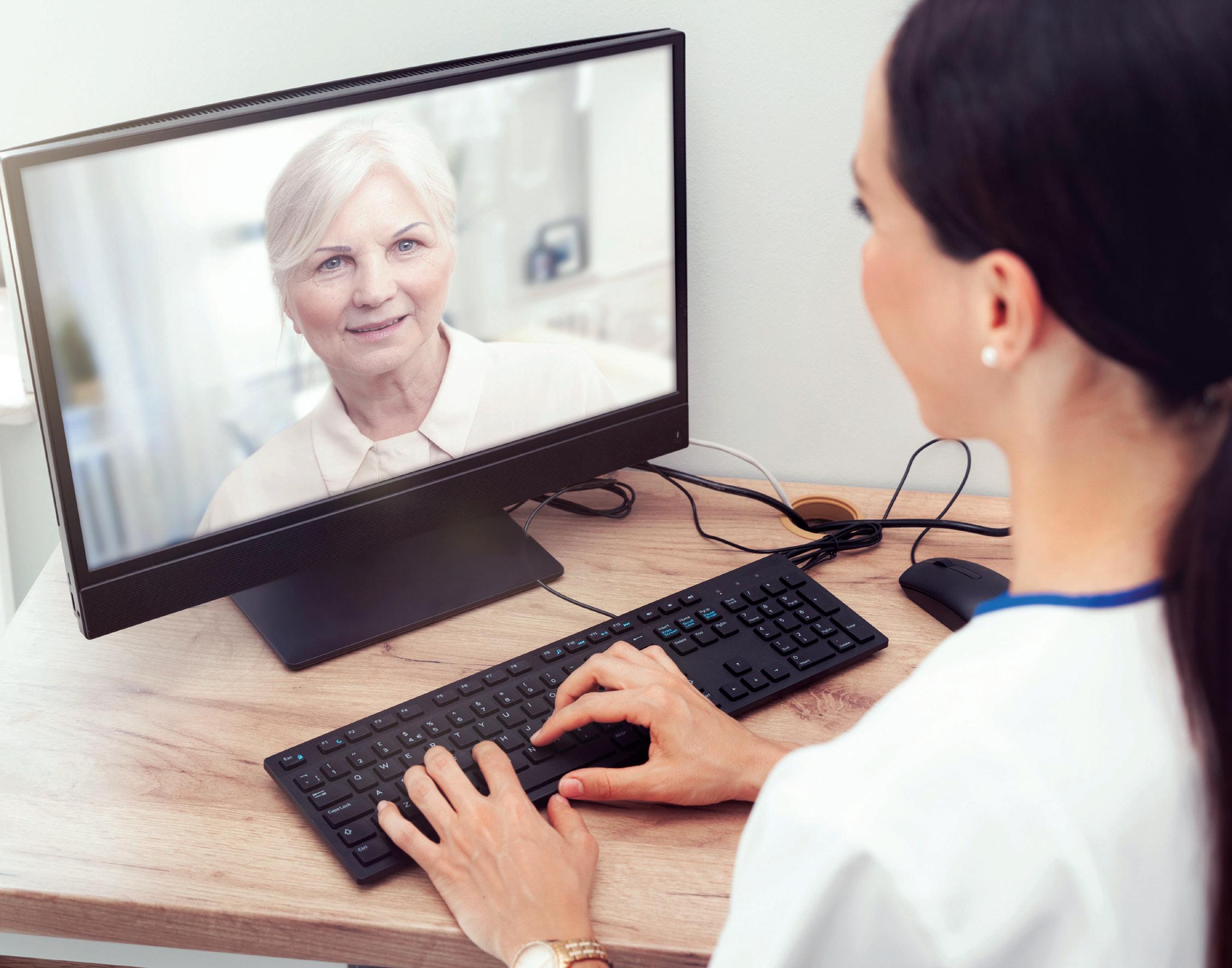
1 minute read
TELEHEALTH
209 SENIOR LIVING | TELEHEALTH Use Telehealth Wisely
The pandemic has brought telemedicine into the mainstream. While previously online doctor visits were an emerging concept, the pandemic accelerated their adoption by the public.
Here are some tips to make the most of your doctor’s telemedicine capabilities.
DailyCaring.com lists challenges in mobility and transportation as barriers to seniors being able to attend in-person doctor visits, as well as challenges for their caregivers. Managing chronic health conditions can be made more manageable with telehealth visits.
When seniors find their doctors to be more accessible, they are more likely to keep recommended intervals for doctor visits. In addition, with wearable technology that can track health information, doctors can access data to help them better treat patients from afar.
CHALLENGES
NIH notes that some seniors who are not digital natives might need some technological training in order to use telehealth services.
In addition, AARP reports that some government insurance programs have been slow to sign off on coverage for telehealth visits and may have restrictions that prevent some people from accessing care.
TIPS
It’s important to know that not all visits can be conducted virtually. Check with your doctor’s office about whether your specific concern or condition is a good fit for a telehealth visit. As usual, if you are experiencing symptoms such as chest pain, symptoms of a stroke or any other life-threatening situation, call 911 or visit an emergency room.
U.S. News and World Report offers the following tips for a successful telehealth visit. • You’ll need a telephone line, a highspeed internet connection, a smartphone, tablet or computer for access to video streaming, and you will likely need an app your doctor’s office will provide. • Be sure you have filled out any paperwork your doctor’s office
requires before the visit. • Check with your insurance company to be sure the visit will be covered. • Prepare as you would for any other doctor’s visit, including making notes of symptoms and questions you’d like to ask, as well as a list of current medications. • Find a quiet, private, distractionfree location in your home to have your visit.






